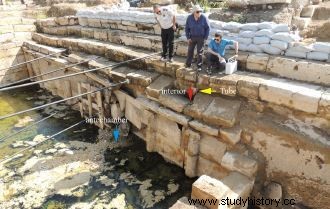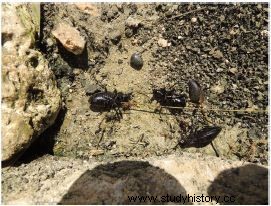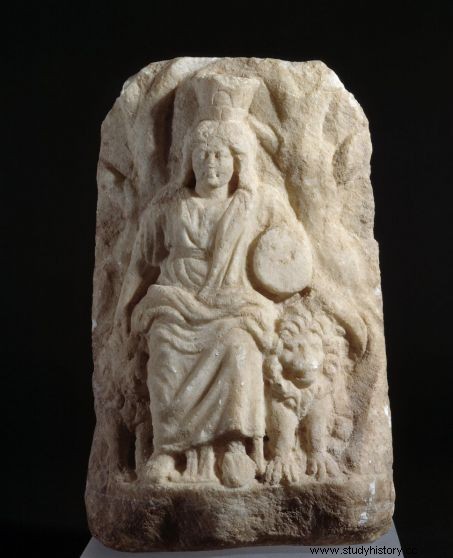Toxic fumes of carbon dioxide were measured in the Roman temple of Pluto, god of the Underworld, in Hierapolis (Turkey). In ancient times, they had been used to sacrifice animals during mysterious rites.

Ruins of ancient Hierapolis, in present-day Turkey.
Hell and radiation! In Hierapolis, near Pamukkale in Turkey, the Plutonium, a Roman sanctuary dedicated to Pluto, king of the underworld, was not paved with good intentions... but rather animal bones! Beasts sacrificed to the most feared of deities by a mysterious process. 2200 years ago, the faithful, seated on stone steps, could witness a strange spectacle. When the animals escorted by priests approached "the entrance to Hell", a small stone door, the animals died suddenly, without the slightest contact, while the officiants emerged unscathed... By what miracle? Like Pliny the Elder who had mentioned this wonder, the Greek geographer Strabo (65 BC-25 AD), was convinced that it was because they were castrated that the eunuch priests* of the local cult of Cybele escaped death (read below ). The truth is much more prosaic.
Taking measurements at the former Plutonium site in Hierapolis, Turkey. Credits:Hardy Pfanz
Taking advantage of a rare natural phenomenon, the Romans had in fact erected these temples on geological faults releasing carbon dioxide CO2 . A concentrated cloud of carbon dioxide suffocated anyone who inhaled the gas. A research team led by volcanologist Hardy Pfanz from the University of Duisburg-Essen in Germany traveled to the Hierapolis site to analyze the deadly potential of ancient Plutonium unearthed in 2011. In an article published in the journal Archaeological and Anthropological Sciences , the scientists explain how, using a portable gas analyzer, they measured the content of the gases escaping from the "gateway to hell". In the Temple of Pluto and the small cave below (where concentrations of CO2 very high continue to kill birds, insects and small mammals), these geochemical readings have above all made it possible to establish that the concentrations of gases supposed to reflect the Hadean breath (of Hades, Greek name for Pluto), evolved according to the hours of the day.
Little current victims of carbon dioxide fumes, near the ancient Plutonium sanctuary of Hieropolis. Credits:Hardy Pfanz
In this region of Turkey with very active seismicity, the deep crack located under the Plutonium continuously emits carbon dioxide in the form of a fog. If during the day, the heat of the solar star dissipates the gases, at night, and at dawn, the CO2 heavier than air forms a sheet floating above the ground, about forty centimeters thick. Its density would be enough to kill a human being, according to specialists. "The eunuch priests probably made their sacrifices in the morning or evening, when the gas concentration was highest" , experts say. Thanks to their height, by protecting their noses, or by momentarily interrupting their breathing, the priests escaped toxic inhalations, unlike animals (among them oxen), asphyxiated in a few minutes. A power that the audience was to attribute to chthonic supernatural powers.
Priests of Cybele
Cybele between two lions. Credits:Jean Bernard/AFP
The practice of castration has existed in Europe since antiquity among the Greeks and Romans. In the earliest times, it essentially concerned the religious domain and the so-called mystery cults, such as that of the Phrygian goddess Cybele. To enter the service of the goddess, the corybantes, priests also called “galles” or “galli”, practiced self-castration rituals, known as sanguinaria .



